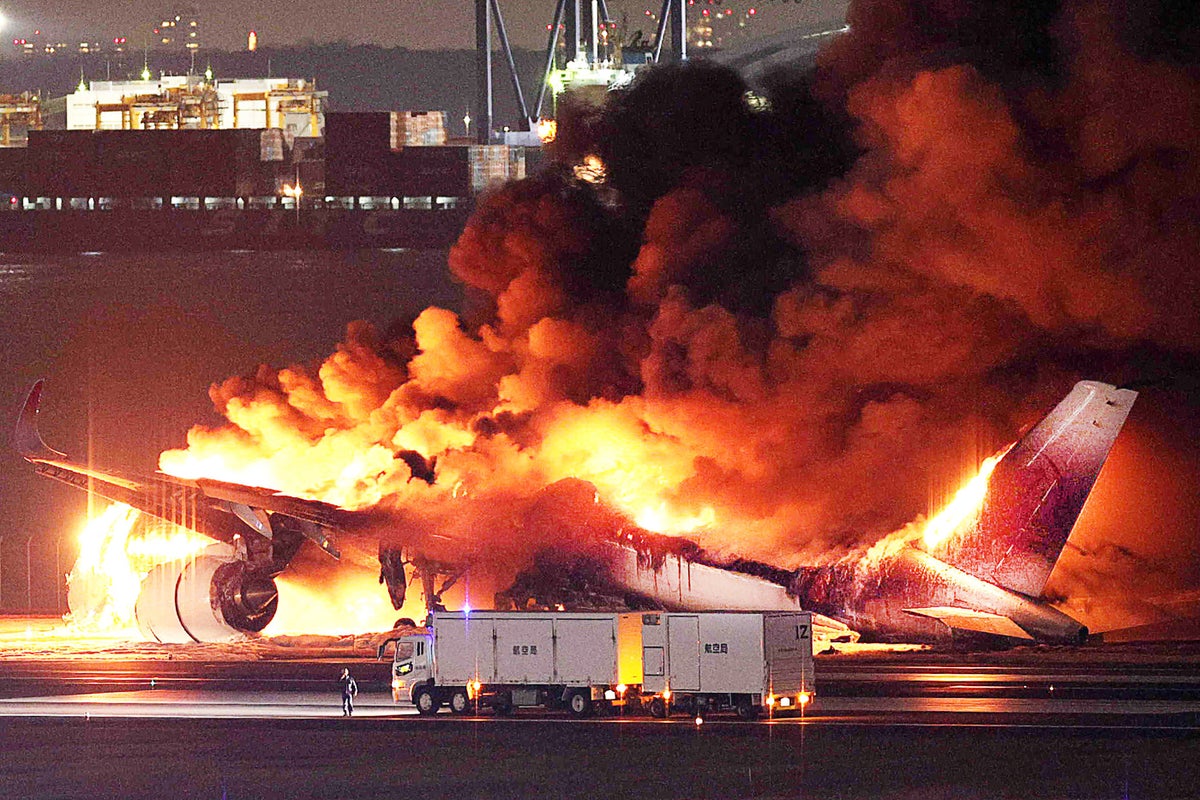
The image of a huge passenger aircraft speeding along a runway in flames will linger.
Japan Airlines flight JL516 had flown normally from the northern island of Hokkaido. The Airbus A350 was landing at Tokyo’s Haneda airport when it was in collision with a much smaller plane working for the Japanese coastguard in earthquake relief.
Tragically, five of the six personnel died aboard the latter aircraft. But all 379 people aboard the Japan Airlines jet successfully evacuated – a tribute to the professionalism and training of Japan Airlines staff.
The investigation is already under way. The aim is not to assign blame but to learn how to enhance aviation safety in the future. This tragedy will be examined scrupulously by air crash investigators to understand the sequence of events that led to the collision. Investigators will initially focus on why the fundamental of air traffic control – keeping aircraft safely apart – appears to have failed so calamitously.
Safety officials working for the Japanese authorities, Japan Airlines and the planemaker Airbus will study how the fire spread. The fuselage is made from carbon-based composite, rather than traditional aluminium. Did this help protect or endanger the passengers or crew? The term “plastic plane” gets bandied about, but these materials are used for their high strength, low weight and durability. The US Federal Aviation Administration (FAA) says that carbon-fibre can be safer: “Aluminium will melt at 660C in large fires. Typically, for a composite material, the degradation temperature to cause burning is 300-500C, but it will maintain structural integrity during burning.”
I can understand that the fiery image will feed the anxiety of travellers who are fearful of flying. “Here’s what could happen to my plane,” they may reasonably conclude. I suggest they look at the event from the opposite direction: as more evidence of the aviation industry’s obsession with safety.
This accident happened barely a day after the safest ever year for passenger aviation. The report from the Dutch air safety organisation, To70, concluded that only two fatal accidents occurred during the last 12 months, compared with six in 2022. Both were propeller aircraft on domestic flights. Sadly, 86 people died. For comparison, that is the average number of road accident fatalities in 35 minutes, according to the latest UN figures. No fatal aircraft accident last year involved international flights or passenger jets.
In the UK, we are days away from the 35th anniversary of the last fatal crash involving a British passenger jet: the Kegworth disaster of 8 January 1989.
Since that tragedy, involving a British Midland Boeing 737, the UK has maintained an extraordinary record for keeping passengers safe. The nation has the distinction of being the leading base for operations for the two pan-European low-cost giants, Ryanair and easyJet. They are the world’s safest airlines, in terms of the number of passengers flown without a fatal accident.
British Airways, Jet2, Virgin Atlantic and Wizz Air also have formidable safety records. BA last suffered a fatal event in 1985, when a Boeing 737 caught fire on the runway at Manchester; the other three airlines are accident-free.
Once the investigation is complete, lessons will be shared with the aviation safety world to make future flights safer still. Yet what should passengers learn from the Tokyo crash?
Simply, watch the safety briefing. When the crew line up to perform their demonstration, put down your phone. Watch and listen, paying particular attention to how to leave the aircraft in a hurry.
Many emergencies happen while the plane is on the ground; most are survivable, as long as everyone plays their part. In the unlikely event that you find yourself on a plane with an emergency evacuation, leave that cabin baggage behind.
This awful tragedy has highlighted the skill and professionalism that goes into aviation safety. Make sure you are in tune with the women and men who are protecting you.







